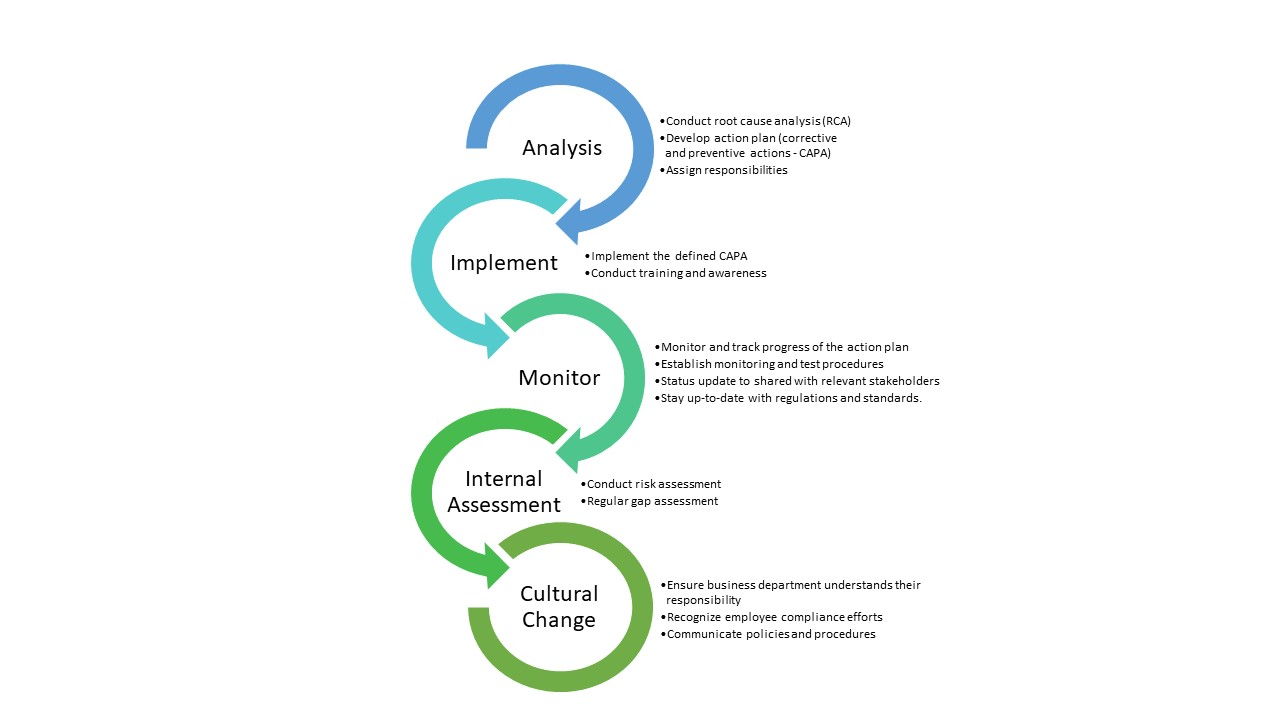The growing emergence of information security threats calls for the incorporation of risk management into the organization’s corporate governance. Risk management has been recognized as high importance as other critical corporate governance areas by the Board and senior-level executives. Both risk management and corporate governance share common objectives and goals, they aim to enhance the organization’s ability to identify, assess, and manage risks effectively while supporting the achievement of strategic objectives and preserving stakeholders’ value.
By integrating risk management and corporate governance, organizations can make informed decisions based on a comprehensive understanding of risks. This involves consideration of risk factors when evaluating strategic initiatives, investments, operational changes, projects, and other business significant areas. More so, it helps avoid unnecessary risks, seize opportunities, and optimize outcomes.
Some points to consider while incorporating risk management and corporate governance. It is important to note that this is not limited to just these points:
Clearly Define Roles and Responsibilities:
Establishing accountability and ownership for risk-related activities is essential for effective integration. According to NIST Special Publication 800-53 Revision 5, a senior-level manager and an executive are expected to be appointed to view and analyze risk from an organization-wide perspective and ensure management of risk is consistent across the organization. Integrating risk management with governance involves defining and communicating the roles and responsibilities of key stakeholders and functions for oversight. Key stakeholders include the board of directors, executive management, risk committees, risk managers, internal auditors, and business managers.
Board and Executive Involvement:
Effective integration starts with the active engagement and oversight of the board of directors and executives in risk-related activities. The board sets the risk appetite, provides guidance on risk management strategies, oversees risk management practices, and ensures that risk management is integrated into strategic planning and decision-making. Executive management takes ownership of risk management and cascades it down to operational levels. Board members should be equipped with the necessary knowledge and expertise to understand and assess risks effectively.
Risk Appetite Alignment:
Risk appetite provides a clear statement of the level of risk the organization is willing to accept in pursuit of its objectives. Thus, the organization’s risk management activities should align with the organization’s risk appetite, as defined by the risk governance framework. The risk appetite should be reviewed periodically to ensure it remains aligned with the organization’s evolving goals and risk landscape.
Risk Governance and Management Framework:
Develop a risk governance and management framework that outlines the structures, policies and processes for risk management and incorporates the organization’s risk governance principles and objectives. The framework should establish accountability and ensure that risk management responsibilities are properly delegated and understood throughout the organization. An internationally recognized framework such as the Risk Management Framework for Information Systems and Organizations can be used to establish a framework. The NIST Special Publication 800-37 Revision 2 provides a disciplined, structured, and flexible process for managing security and privacy risk that includes information security categorization; control selection, implementation, and assessment; system and common control authorizations; and continuous monitoring.
Reporting and Communication:
Effective integration requires robust reporting and communication mechanisms between risk management and corporate governance. This facilitates the flow of risk information across the organization. Regular reporting on risks, incidents, and risk management activities to the board, executive, senior management, and other decision-makers provides meaningful insights into risk exposure, thereby facilitating and supporting informed decision-making. The report should highlight key risks, their status, mitigation efforts, and any emerging issues. Successful risk reporting and communication raises awareness of risks and promotes a risk-aware culture.
Monitoring and Continuous Improvement:
Integration of risk management and corporate governance is an ongoing process and hence requires a commitment to continuous improvement. This iterative process helps the organization stay responsive to evolving risks, emerging threats, and changing business environments. Regular monitoring, evaluation, and review of risk management practices, policies, procedures, and frameworks should be conducted to identify areas of improvement and ensure their effectiveness and relevance. This may involve periodic assessments, incorporating lessons learned, adopting emerging best practices, the alignment of risk management with governance objectives and leveraging technology and data analytics to enhance risk capabilities. In addition, establishing a feedback loop helps to refine risk management practices and enhance risk culture within the organization.
In summary, with the incorporation of risk management and corporate governance, organizations can ensure that risk management practices are embedded in their decision-making processes, supported by appropriate governance structures, and aligned with strategic objectives and risk appetite. The integration helps enhance risk awareness, resilience, and the ability to navigate through internal and external risk factors and uncertainties effectively while improving the overall performance of the organization.



I don’t think the title of your article matches the content lol. Just kidding, mainly because I had some doubts after reading the article.
Hi Akin,
Thanks so much for the feedback. Do you mind sharing your doubt regarding the article
Your article helped me a lot, is there any more related content? Thanks!
Thanks for sharing. I read many of your blog posts, cool, your blog is very good.
Thanks for sharing. I read many of your blog posts, cool, your blog is very good.